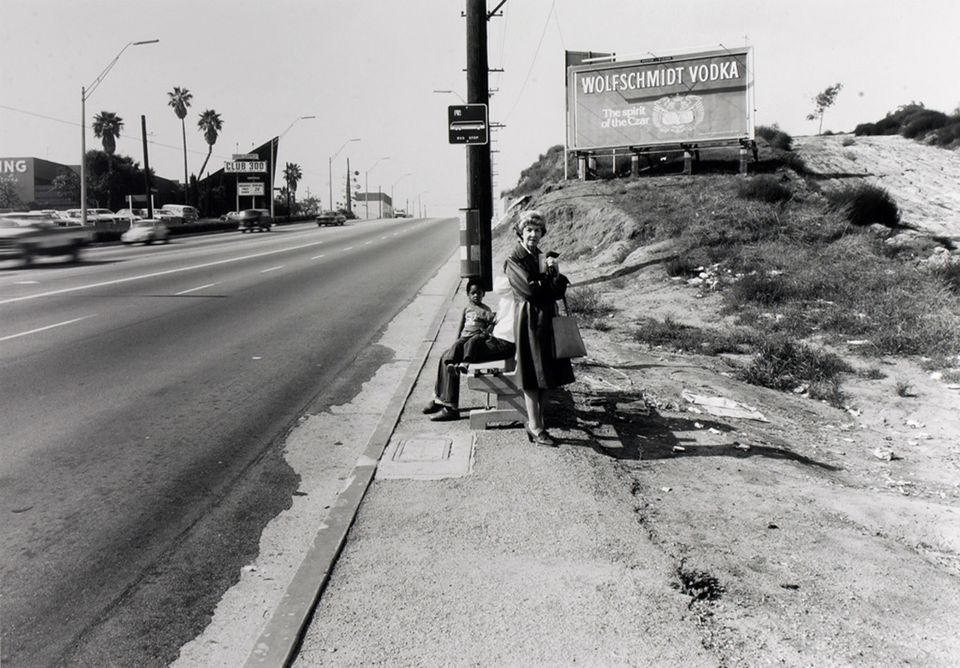
SAAM's current photography exhibition Down These Mean Streets: Community and Place in Urban Photography, explores the post-World War II changes taking place in cities across the country through the eyes of ten photographers who documented these transformations. Alex Santana, SAAM's 2015 Latino Museum Studies Fellow and current Manager of Public Engagement at Mana Contemporary in Jersey City, New Jersey gives us some insight into the work of one of these artists, Anthony Hernandez.
Many Chicano artists during the 1970s and 1980s created work that responded to the overbearing presence of the freeway system in Los Angeles. These winding series of roadways, often adjacent to or directly above low-income barrios of LA, are present in the murals and paintings of Judy Baca, Frank Romero, and Carlos Almaraz, all who came of age when freeway construction transformed the Los Angeles landscape. In more subtle ways, the freeway is also present in the compelling photography of Anthony Hernandez.
Born in 1947, Anthony Hernandez grew up in Aliso Village, a sprawling public housing project east of downtown Los Angeles. Hernandez's career took off in the 1970s when he began to document people traversing the streets of Los Angeles. From the outset, his photography reflected the changing dynamics of the urban environment and its residents.
The statewide modernization projects of California, beginning in the early 1900s, peaking in the 1950s, and continuing until this day, prioritized automotive mobility in LA through the expansion of its freeway system. Los Angeles became a model for the modern, decentralized city, favoring suburban home ownership and automotive mobility while marginalizing those in urban, low-income areas reliant on public transportation. In fact, historian Eric Avila has noted that the construction of many of Los Angeles roadways depended on the destruction of low-income neighborhoods that were targeted as the ideal locations for urban freeways. This history is powerfully visualized in one panel in Judy Baca's epic mural, The Great Wall of Los Angeles, where she depicts the freeway as a serpent that menacingly coils around bodies and separates families. In a very literal way, the city became divided by its freeway system, as certain communities were prioritized over others.
Between 1976 and 1981, the National Endowment for the Arts commissioned artists across the country to document contemporary America—its cities, towns, and people. Hernandez participated in the project with his series Public Transit Areas (Long Beach Documentary Survey Project), 1979-1980 that documented life in Long Beach, California, located just south of Los Angeles. Hernandez captures urban scenes where passengers wait at bus stops. In each photograph of the series, the landscape is vertically divided into two planes. On the left side is the expanse of road, extending from the foreground until the vanishing point in the middle of the frame. The focal point of each photograph highlights the public transit passengers who seem to be waiting for a bus that will never come. Their expressions communicate a frustrated boredom, and their bodily postures feel tired and motionless. In Termino Ave. and Pacific Coast Highway, the passengers dispassionately meet the photographer's gaze while waiting, and their positions feel especially static when juxtaposed with the roadway. Moving too fast for even the camera to capture, cars zoom by on the left side of the landscape, appearing as blurred figures.
Although Hernandez's photographs do not depict the freeway system's identifiable spiral formations, the symbolism of the roadway is still overbearingly present within his photographs. There is undeniable tension between the passivity of his subjects—who are visibly left out of LA's car culture—and the fast-paced nature of the surrounding landscape. This particular photograph captures a view of the Pacific Coast Highway, long considered one of the state's most scenic roadways—a tourist attraction in and of itself—as it winds alongside the Pacific Ocean. Hernandez's alternative view challenges the positive connotations associated with this roadway and interjects the more difficult perspective of class inequality. Perhaps there are tourists in Hernandez's image obscured by the velocity of their blurred cars. The passengers who wait indefinitely, however, remain extremely visible in Hernandez's series, and the viewer is confronted with a new vision of the Pacific Coast Highway as a metaphor for class segregation.
It is easy to consider Anthony Hernandez's Long Beach series as documentary photography, primarily because the works illuminate the stark class differences that existed (and continue to exist) in Los Angeles. By including urban residents, as well as the landscapes that they inhabit, Hernandez also creates intimate portraits of LA itself where the city and its history are personified.
Anthony Hernandez's photographs are currently on view at SAAM in the exhibition, Down These Mean Streets: Community and Place in Urban Photography through August 6, 2017.


















